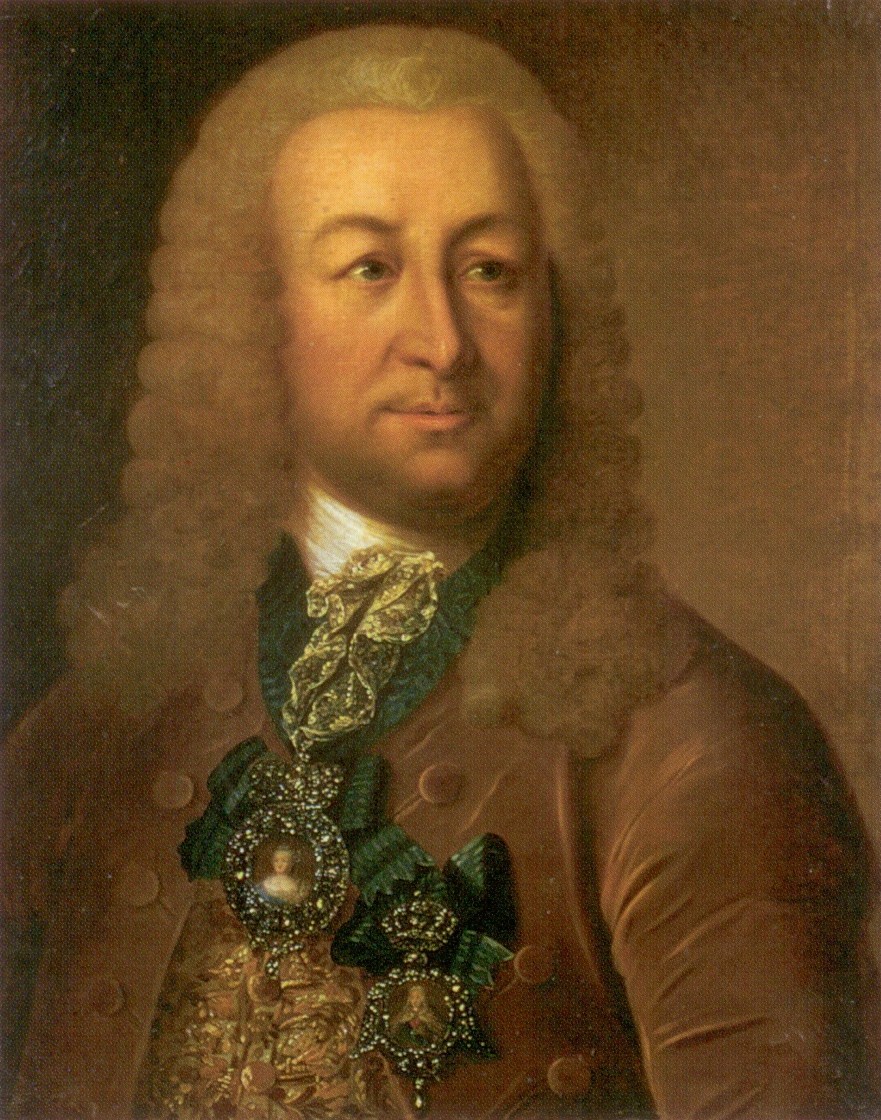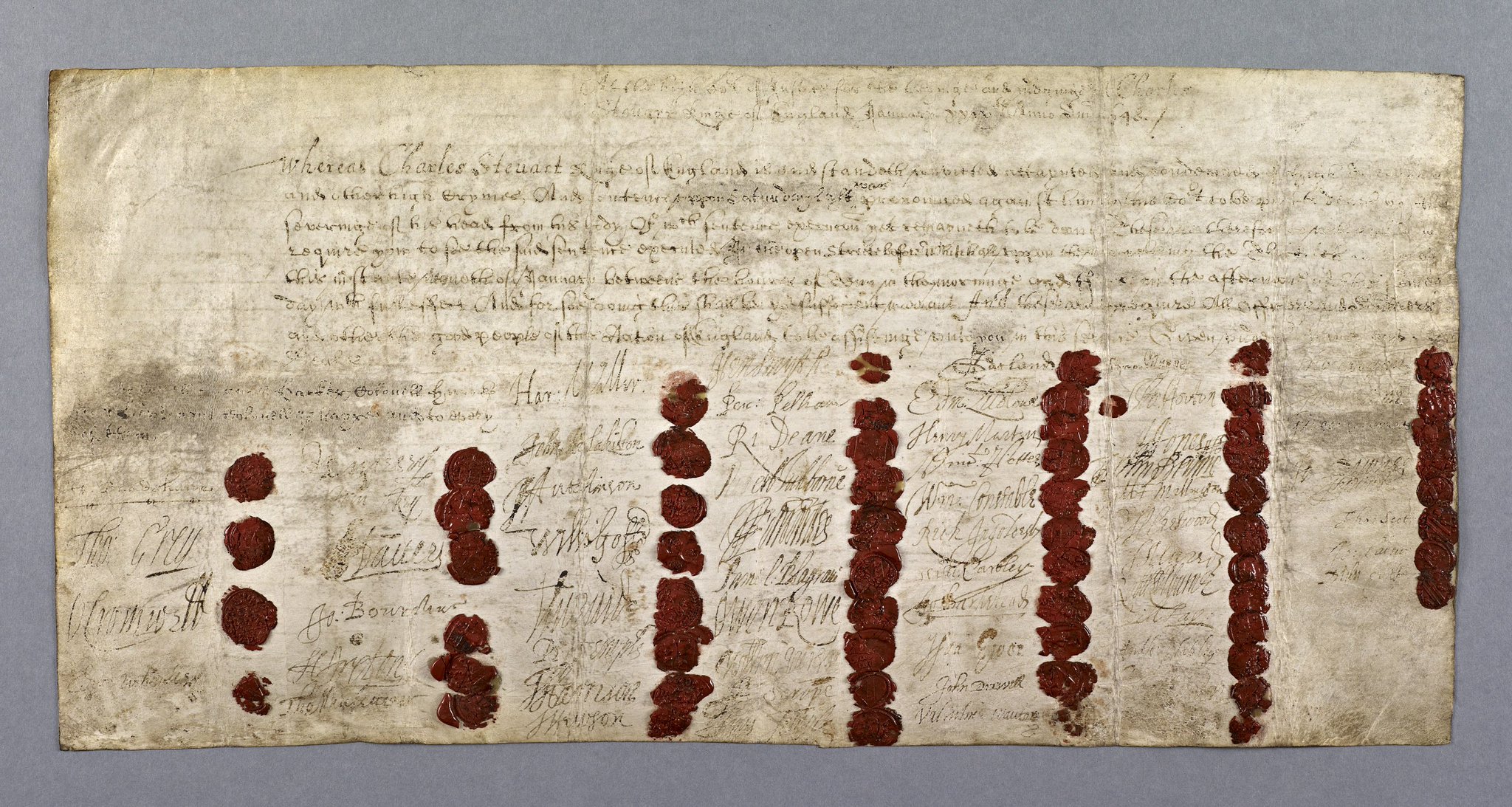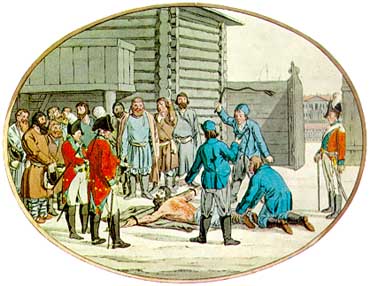|
Natalia Lopukhina
Natalia Fyodorovna Lopukhina (November 11 1699– March 11 1763) was a Russian noble, court official and alleged political conspirator. She was a daughter of Matryona Balk, who was sister of Anna Mons and Willem Mons. She is famous for the Lopukhina affair, an alleged conspiracy engineered by the diplomacy of Holstein and France at the Russian court and centered on the person of Lopukhina. Life By marriage to Stepan Vasiliyevich Lopukhin (a cousin of Eudoxia Lopukhina and a favourite of Eudoxia's husband Peter the Great) she was a member of the Lopukhin family. During the reign of Anna of Russia (1730–40), Natalia Lopukhina was described as "the brightest flower of St Petersburg court". Her liaisons with some of the most powerful courtiers and her arrogance toward Peter I's neglected daughter Elizaveta Petrovna must have fed the latter's jealousy. Elizaveta's accession to the throne in 1741 was a huge blow to Lopukhina. It was owing to her friendship with Anna Bestuzheva, w ... [...More Info...] [...Related Items...] OR: [Wikipedia] [Google] [Baidu] |
Jean Armand De Lestocq
Count Jean Armand de L'Estocq (German: ''Johann Hermann Lestocq'', Russian: ''Иван Иванович Лесток''; 29 April 1692, in Lüneburg – 12 June 1767, in Saint Petersburg) was a French adventurer who wielded immense influence on the foreign policy of Russia during the early reign of Empress Elizabeth. Biography Coming from a noble family of Champagne, as a youth he was committed to prison for a petty offense. He was liberated on the urging of Françoise-Marie de Bourbon (1677–1749), legitimized daughter of Louis XIV of France and Françoise-Athénaïs, marquise de Montespan. Françoise-Marie was also married at the time to Philippe II, Duke of Orléans. She was thus a well-connected patroness. In 1709, Lestocq arrived in Saint Petersburg in the capacity of a court physician. He was well regarded by Catherine I of Russia until 1720, when her husband had him exiled to Kazan for having seduced a jester's daughter. Upon the Emperor's death, Catherine summoned her fa ... [...More Info...] [...Related Items...] OR: [Wikipedia] [Google] [Baidu] |
Mons Family
The Mons family is a Dutch family associated with several affairs that shocked the court of Peter I of Russia in 1704 and 1724. * Anna Mons (1672 – 1714) * Willem Mons (1688 – 1724) * Natalia Lopukhina Natalia Fyodorovna Lopukhina (November 11 1699– March 11 1763) was a Russian noble, court official and alleged political conspirator. She was a daughter of Matryona Balk, who was sister of Anna Mons and Willem Mons. She is famous for the Lopu ... (1699 – 1763) Russian noble families Dutch families {{Netherlands-bio-stub ... [...More Info...] [...Related Items...] OR: [Wikipedia] [Google] [Baidu] |
Public Domain
The public domain (PD) consists of all the creative work A creative work is a manifestation of creative effort including fine artwork (sculpture, paintings, drawing, sketching, performance art), dance, writing (literature), filmmaking, and composition. Legal definitions Creative works require a cre ... to which no exclusive intellectual property rights apply. Those rights may have expired, been forfeited, expressly waived, or may be inapplicable. Because those rights have expired, anyone can legally use or reference those works without permission. As examples, the works of William Shakespeare, Ludwig van Beethoven, Leonardo da Vinci and Georges Méliès are in the public domain either by virtue of their having been created before copyright existed, or by their copyright term having expired. Some works are not covered by a country's copyright laws, and are therefore in the public domain; for example, in the United States, items excluded from copyright include the for ... [...More Info...] [...Related Items...] OR: [Wikipedia] [Google] [Baidu] |
Great Power
A great power is a sovereign state that is recognized as having the ability and expertise to exert its influence on a global scale. Great powers characteristically possess military and economic strength, as well as diplomatic and soft power influence, which may cause middle or small powers to consider the great powers' opinions before taking actions of their own. International relations theorists have posited that great power status can be characterized into power capabilities, spatial aspects, and status dimensions. While some nations are widely considered to be great powers, there is considerable debate on the exact criteria of great power status. Historically, the status of great powers has been formally recognized in organizations such as the Congress of ViennaDanilovic, Vesna. "When the Stakes Are High – Deterrence and Conflict among Major Powers", University of Michigan Press (2002), pp 27, 225–22(PDF chapter downloads) [...More Info...] [...Related Items...] OR: [Wikipedia] [Google] [Baidu] |
Maria Theresa Of Austria
Maria Theresa Walburga Amalia Christina (german: Maria Theresia; 13 May 1717 – 29 November 1780) was ruler of the Habsburg monarchy, Habsburg dominions from 1740 until her death in 1780, and the only woman to hold the position ''suo jure'' (in her own right). She was the sovereign of Archduchy of Austria, Austria, Kingdom of Hungary, Hungary, Kingdom of Croatia (Habsburg), Croatia, Crown of Bohemia, Bohemia, Principality of Transylvania (1711–1867), Transylvania, Duchy of Mantua, Mantua, Duchy of Milan, Milan, Kingdom of Galicia and Lodomeria, Lodomeria and Galicia, the Austrian Netherlands, and Duchy of Parma, Parma. By marriage, she was Duchess of Lorraine, Grand Duchess of Tuscany and Holy Roman Empress. Maria Theresa started her 40-year reign when her father, Emperor Charles VI, died on 20 October 1740. Charles VI paved the way for her accession with the Pragmatic Sanction of 1713 and spent his entire reign securing it. He neglected the advice of Prince Eugene of Savoy, ... [...More Info...] [...Related Items...] OR: [Wikipedia] [Google] [Baidu] |
Austria
Austria, , bar, Östareich officially the Republic of Austria, is a country in the southern part of Central Europe, lying in the Eastern Alps. It is a federation of nine states, one of which is the capital, Vienna, the most populous city and state. A landlocked country, Austria is bordered by Germany to the northwest, the Czech Republic to the north, Slovakia to the northeast, Hungary to the east, Slovenia and Italy to the south, and Switzerland and Liechtenstein to the west. The country occupies an area of and has a population of 9 million. Austria emerged from the remnants of the Eastern and Hungarian March at the end of the first millennium. Originally a margraviate of Bavaria, it developed into a duchy of the Holy Roman Empire in 1156 and was later made an archduchy in 1453. In the 16th century, Vienna began serving as the empire's administrative capital and Austria thus became the heartland of the Habsburg monarchy. After the dissolution of the H ... [...More Info...] [...Related Items...] OR: [Wikipedia] [Google] [Baidu] |
Siberia
Siberia ( ; rus, Сибирь, r=Sibir', p=sʲɪˈbʲirʲ, a=Ru-Сибирь.ogg) is an extensive geographical region, constituting all of North Asia, from the Ural Mountains in the west to the Pacific Ocean in the east. It has been a part of Russia since the latter half of the 16th century, after the Russians conquered lands east of the Ural Mountains. Siberia is vast and sparsely populated, covering an area of over , but home to merely one-fifth of Russia's population. Novosibirsk, Krasnoyarsk and Omsk are the largest cities in the region. Because Siberia is a geographic and historic region and not a political entity, there is no single precise definition of its territorial borders. Traditionally, Siberia extends eastwards from the Ural Mountains to the Pacific Ocean, and includes most of the drainage basin of the Arctic Ocean. The river Yenisey divides Siberia into two parts, Western and Eastern. Siberia stretches southwards from the Arctic Ocean to the hills of north-ce ... [...More Info...] [...Related Items...] OR: [Wikipedia] [Google] [Baidu] |
Execution Warrant
An execution warrant (also called death warrant or black warrant) is a writ that authorizes the execution of a condemned person. An execution warrant is not to be confused with a " license to kill", which operates like an arrest warrant but with deadly force instead of arrest as the end goal. United States In the United States either a judicial or executive official designated by law issues an execution warrant. This is done when a person, in trial court proceedings, has been sentenced to death, after trial and conviction, and usually after appeals are exhausted. Normally when a death warrant is signed and an execution date is set, the condemned person is moved from his or her death row cell to a death watch cell, which is typically located adjacent to the execution chamber. Usually, the government agency charged with carrying out an execution, normally the state's Department of Corrections or the Federal Bureau of Prisons in federal cases, has a limited time frame, norm ... [...More Info...] [...Related Items...] OR: [Wikipedia] [Google] [Baidu] |
Knout
A knout is a heavy scourge-like multiple whip, usually made of a series of rawhide thongs attached to a long handle, sometimes with metal wire or hooks incorporated. The English word stems from a spelling-pronunciation of a French transliteration of the Russian word кнут (''knut''), which simply means "whip". The original Some claim it was a Tatar invention and was introduced into Russia in the 15th century, perhaps by Grand Duke Ivan III the Great (1462–1505). Others trace the word to Varangians and derive it from the Swedish ''knutpiska'', a kind of whip with ''knots''. Still others maintain it is of generic Germanic origin, not necessarily Scandinavian, comparing it with the German ''Knute'', Dutch ''knoet'' (both meaning knout) and with Old Norse ''knutr'', Anglo-Saxon ''cnotta'' and English ''knot''. The Russian knout had different forms. One was a lash of rawhide, long, attached to a wooden handle, long. The lash ended in a metal ring, to which was attached a ... [...More Info...] [...Related Items...] OR: [Wikipedia] [Google] [Baidu] |
Saint Petersburg
Saint Petersburg ( rus, links=no, Санкт-Петербург, a=Ru-Sankt Peterburg Leningrad Petrograd Piter.ogg, r=Sankt-Peterburg, p=ˈsankt pʲɪtʲɪrˈburk), formerly known as Petrograd (1914–1924) and later Leningrad (1924–1991), is the second-largest city in Russia. It is situated on the Neva River, at the head of the Gulf of Finland on the Baltic Sea, with a population of roughly 5.4 million residents. Saint Petersburg is the fourth-most populous city in Europe after Istanbul, Moscow and London, the most populous city on the Baltic Sea, and the world's northernmost city of more than 1 million residents. As Russia's Imperial capital, and a historically strategic port, it is governed as a federal city. The city was founded by Tsar Peter the Great on 27 May 1703 on the site of a captured Swedish fortress, and was named after apostle Saint Peter. In Russia, Saint Petersburg is historically and culturally associated with t ... [...More Info...] [...Related Items...] OR: [Wikipedia] [Google] [Baidu] |
Twelve Collegia
The Twelve Collegia, or Twelve Colleges (russian: Двeнaдцaть Коллегий), is the largest edifice from the Petrine era remaining in Saint Petersburg. It was designed by Domenico Trezzini and Theodor Schwertfeger and built from 1722 to 1744.300 years of Saint Petersburg: Swiss architecture on the NevaTwelve Colleges Pg. 1. Description The three story, red-brick complex of 12 buildings is 400–440 meters long, giving an illusion of one enormous edifice. The result is an "austerely structured" complex with a "rustic style". The original design separated the 12 individual buildings. In subsequent restructuring, they were connected to form the modern complex. History The Twelve Collegia was commissioned by Peter the Great, who wanted a place for the Russian government, at the time divided into 12 branches: * The Senate (created in February 1711, eventually renamed "Council of the Empire")Massie, Robert: ''Peter the Great: His Life and World.'' Part 5, Chapter 58. ... [...More Info...] [...Related Items...] OR: [Wikipedia] [Google] [Baidu] |








.jpg)